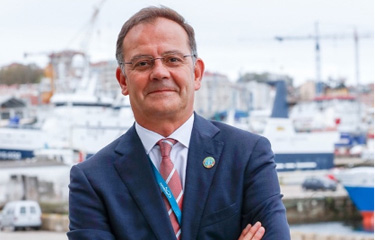Seafood plays a vital part in global food security and nutrition, yet only half of the countries with a nutrition strategy identify fish consumption as a key objective in their public policies, Manuel Barange, the director of the Fisheries and Aquaculture Division of the Food, and Agriculture Organisation of the United Nations (FAO) said in his opening keynote address at the Blue Food Innovation Summit in London, U.K. on 14 June, 2022.
In his address, “Realizing the full potential of the blue food economy,” Barange said there are around 32,000 different species of fish in the world’s lakes, rivers, and oceans, “forming part of a valuable ecosystem. The biomass of fish is twelve times that of humans," he said, making them a readily available source of food for the entire planet, especially impoverished, remote areas of the world.
“We capture or farm around 3,200 different species; 2,981 from capture fisheries and 652 raised in aquaculture,” he said.
Many countries are still not prioritizing fish consumption, despite the well-documented benefits to humans of the essential fatty acids, vitamins, and minerals they contain. Barange said there are further benefits to shifting attention toward fish production and consumption: aquaculture production is a far more efficient converter of feed than land-based animal systems, and fisheries and aquaculture are also more climate friendly than land farming, he said.
“We have to change this situation because the number of undernourished people has grown since 2014, [sky]rocketed since 2020 as a result of the COVID-19 pandemic, and is likely to rise further this year due to the ongoing war in Ukraine,” he said.
In 2020, global production of all seafood, excluding algae, was 178 million metric tons (MT) with a first sale value of USD 406 billion (EUR 384.9 billion). Of that total, 157 million MT went to direct human consumption, which equates to a global average of 20.3 kilograms of seafood consumption per person per year, according to the FAO.
“The annual consumption figure is twice that of the 1960s, yet global population has risen from around three billion people then to 7.5 billion today. This shows how seafoods now play a greater role in terms of nutrition and food security,” Barange said.
In the 1980s, the majority of globally traded seafood came from capture fisheries, but since then, aquaculture production has grown to match wild-catch fisheries in terms of production volume. Production from inland and marine aquaculture has also risen steadily.
“Even more important is the change over time in the volume of capture fisheries dedicated to animal feed production. In the 1960s, almost half of all fish went into animal feed, but today that is down to just over 10 percent, with the rest going for human consumption,” he said.
Barange said while the seafood industry is not looked at as a leading innovator, the widescale changes it has adapted, including improving the sustainability of its practices, make it a global leader. But it – and its regulatory bodies, including federal governments – can do more both in terms of sustainability and in terms of production, he said.
“How much more can we do if we are more directed and targeted in the interventions and objectives that we want from aquatic foods?” he said. “This is what we call blue transformation.”
For its part, the FAO has named blue transformation a strategic priority, with three key goals, Barange said. The first is intensification and expansion of sustainable aquaculture, with the hope of improving yields as much as 30 to 45 percent, particularly in countries with net food deficits, so as to satisfy global demand for aquatic food and distribute benefits equitably. To achieve this goal, better technology, better governing frameworks, better production, and better access to trade are required, Barange said.
“Increasing seafood production in Africa is vital to keep up with population growth, if we are to avoid per capita consumption decreasing there by the end of this decade,” Barange said.
The second objective is to ensure that all fisheries come under effective management, which Barange said is currently not the case. The FAO’s desired outcome is to restore all fish stocks to levels capable of producing their maximum sustainable yield.
The FAO’s third objective is to develop and upgrade value chains to ensure the social, economic, and environmental viability of aquatic food systems. The overall aim is to obtain greater and more-inclusive return from aquatic foods by reducing loss and waste, increasing access to market, adding value, and increasing consumer awareness of the value of aquatic foods in the diet.
“If we achieve blue transformation, we believe that by 2050 we can increase aquatic animal production to 248 million MT per year and per capita seafood consumption to 26.5 kilograms,” Barange said. “If we fail, those figures might drop to 180 million MT and an annual per capita consumption of 18.5 kilograms.”
By 2050, the global population will be around 10 billion, and the goal of the FAO is that seafood will play a significant contribution in feeding the entire world.
“Importantly, if we fail to achieve our goal, people will obtain their protein requirements from another source, which will put even more pressure on land-based ecosystems. And that we don’t want,” he said. “Instead, we need all of us from the private sector, governments, intergovernmental institutions, and academia [to get] behind the idea that aquatic foods have great potential. But it needs to be harnessed properly, sustainably, and equitably, [to create] a world without hunger.”
Photo courtesy of FAO







